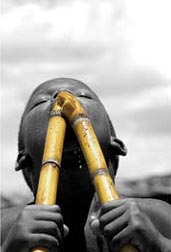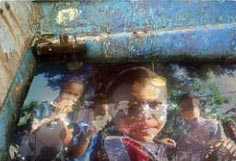
|
Among the winners of previous years’ awards one recognizes the names of those who have since become great mas-
ters, including: Domingo Liz (drawing 1964, sculpture 1966), Luis Martinez Richiez (sculpture 1964, 1968), Jose Cestero
(drawing 1964, 1968, 1983), Elsa Nunez (painting 1967), Candido Bido (painting 1967, 1968, 1981), Geo Ripley (painting
1967), Aquiles Azar Garcia (painting 1968, drawing 1969, 1971, 1990), Rosa Idalia Garcia (painting 1968, 1969), Jorge
Severino (painting 1968), Ramon Oviedo (painting 1969), Hilario Rodriguez (painting 1969, 1983), Soucy de Pellerano
(painting 1970), Ivan Tovar (drawing 1971), Jose Ramon Rotellini (sculpture 1969, 1971), Leonidas Radhames Mejia
(drawing 1981), Amable Sterling Medrano (painting 1983), Marcelo Bermudez (sculpture 1985, 1990, 1994), Jose Sejo
(painting 1985, sculpture 1998), Johnny Bonnelly (sculpture 1987, 1992), Tony Capellan (drawing 1987, sculpture 1990,
painting 1994), Elvis Aviles (painting 1990, 1996), Jorge Luis Pineda (drawing 1990), Said Musa (sculpture 1992), Chiqui
Mendoza (painting 1990, 1992, 1994, drawing 1996), Jose Perdomo (drawing 1992), Ines Tolentino (painting 1994),
Danilo Gonzalez (painting 1994, 1998), Carlos Hinojosa (painting 1987, 1998, 2000) and Leo Nunez (sculpture 1998).
It is worth noting that several artists have participated and been honored on multiple occasions by different panels of
jurors, thus reaffirming the quality of their work.
As of 2000, contemporary art, rejuvenated by new techniques, has been launched with avant-garde artists such as
Polibio Diaz, Odette Goyco, Alexander Morel, Carlos Nunez, Miguel Cruz, Quisqueya Henriquez and Miriam Calzada in
photography, and the surprisingly inventive works of installation art by Miguelina Rivera and Pascal Meccariello. The
value attributed to the evolution of these spontaneous manifestations of art has enabled the contest to provide both
motivation and challenge to artists who seek meaning and substance in innovation.
Likewise, the success of the contest can also be attributed to the talent of its directors, who have shown the wisdom
to pause and, when necessary, to re-examine from within and coax strengths out of weaknesses. While the contest
has expanded its mix of award categories, it has also evolved its mix of jurors. In its first seven contests (1964-1971),
the panel was composed of two well-known Dominican artists and an international juror and was responsible for
awarding prizes in painting, sculpture and drawing. As of 1972, the contest began an introspective phase and took a
nine-year hiatus. From 1981 to 1999, it was reintroduced in a biennial format with a national jury for selection and an
international jury for awards, expanding the number of international jurors from one to three in 1992 as it sought to
reinforce the participation of those not involved with the local art scene. The awards jurors, however, have always made
their choices unanimously and their verdicts are not appealable.
In 2000, change set in again. The traditional categories of painting, sculpture and drawing were supplanted with a range
of seven awards in various disciplines, techniques and materials, and one grand prize. The intention was to remove the
limits that tradition imposes on art. As such, the contest opened itself in 2000 for the first time to recognizing works of
photography, engraving, ceramics and installation art, in addition to traditional artistic expression.
|
|
 |

